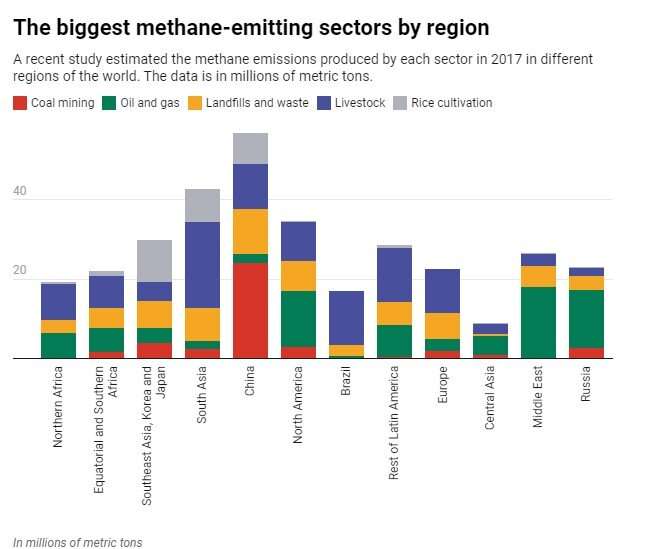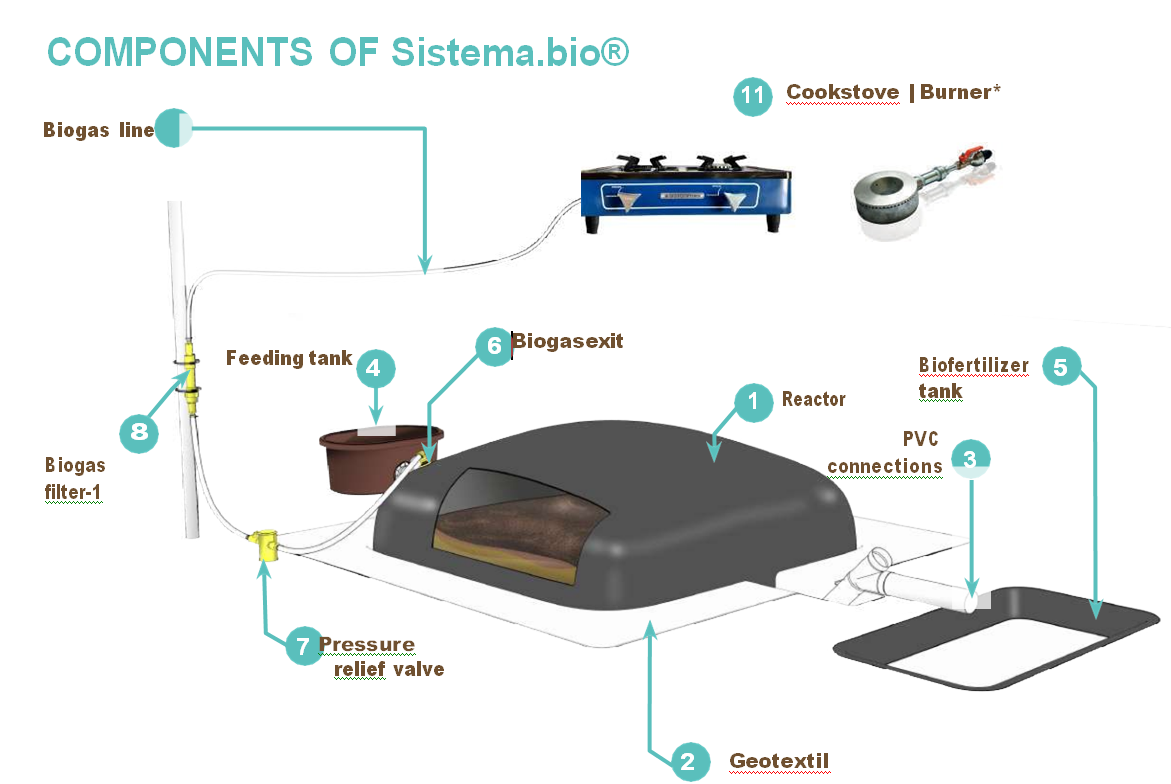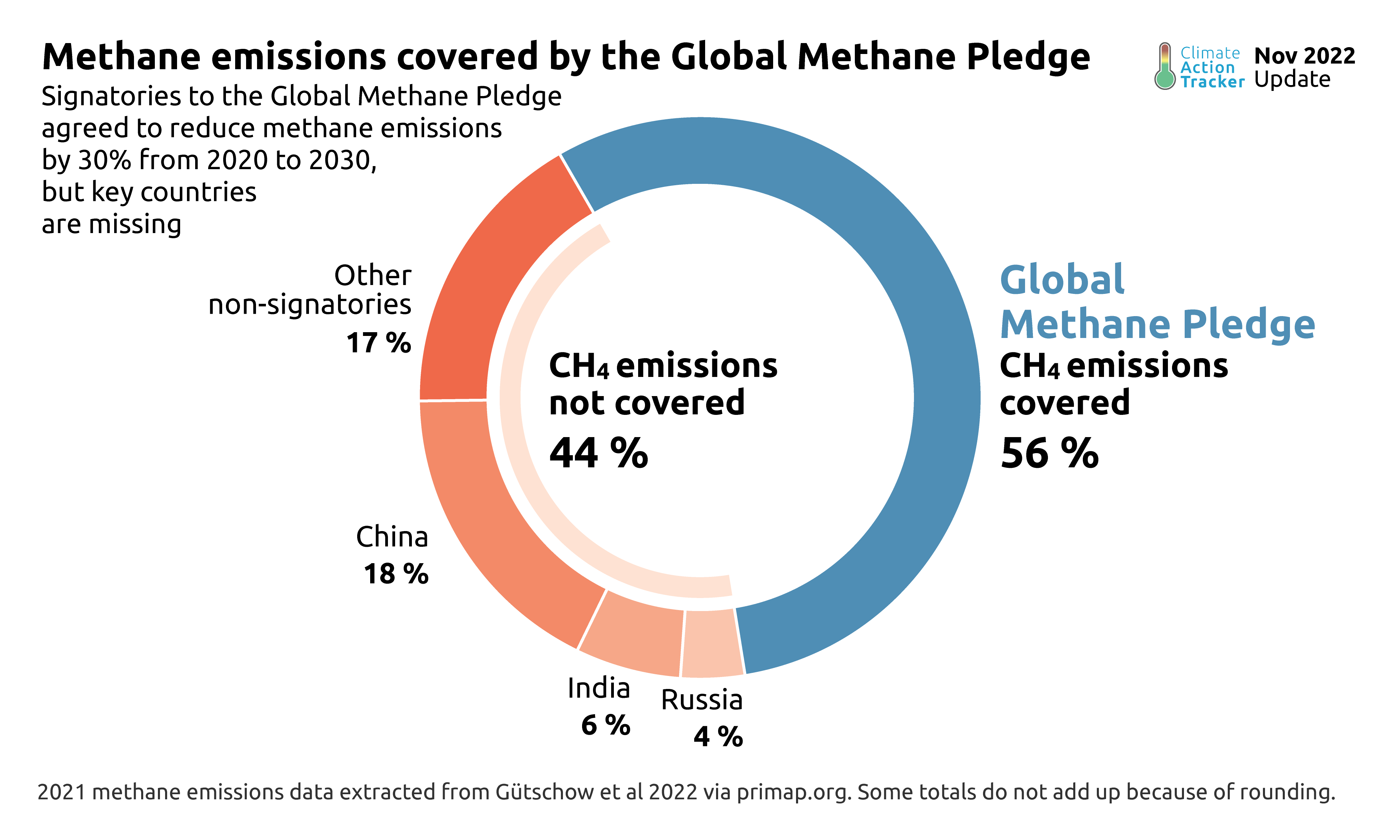Key Takeaways
- Biogas systems can reduce global greenhouse gas emissions by up to 10% when fully implemented, directly addressing 50% of the Global Methane Pledge targets by 2030.
- Converting organic waste through anaerobic digestion prevents methane release while creating renewable energy, offering a dual climate benefit.
- Agricultural waste, particularly livestock manure, represents one of the most significant opportunities for methane emissions reduction through biogas technology.
- Only 2% of global organic waste is currently treated through biogas systems, highlighting the enormous untapped potential for emissions reduction.
- Smallholder farmers in the Global South could play a crucial role in methane reduction strategies through accessible biodigester technology.
“Methane Emissions Must Fall for World …” from www.imf.org and used with no modifications.
Why We Need Immediate Solutions
Methane demands our urgent attention in the fight against climate change. Though less abundant than carbon dioxide, methane traps heat 28-34 times more effectively over a 100-year period, making it a potent force in short-term warming. What makes methane particularly concerning is its role in triggering climate feedback loops—as temperatures rise, more methane is released from thawing permafrost and other sources, further accelerating warming. This creates a dangerous cycle that demands immediate intervention.
The good news?
Addressing methane offers a remarkable opportunity for rapid climate action. Unlike CO2, which can persist in the atmosphere for centuries, methane breaks down in approximately 12 years. This means that reducing methane emissions today can deliver significant climate benefits within our lifetime. The Global Methane Pledge, launched at COP26, aims to cut methane emissions 30% by 2030—a target that would immediately slow the rate of global warming.
“ClimateActionTracker @catclimate.bsky …” from x.com and used with no modifications.
When we talk about methane reduction strategies, biogas stands out as one of the most practical and immediately deployable solutions. By capturing methane that would otherwise escape into the atmosphere and converting it into usable energy, biogas systems deliver a double climate benefit. Not only do they prevent a potent greenhouse gas from contributing to warming, but they also produce renewable energy that can displace fossil fuels. The climate math is compelling: for every unit of methane captured and utilized, we prevent the equivalent of 28-34 units of CO2 warming impact.
How Biogas Captures Methane That Would Otherwise Enter the Atmosphere
Biogas production represents a circular solution to what would otherwise be a linear waste problem with significant methane consequences. In nature or landfills, organic materials decompose and release methane directly into the atmosphere. Biogas systems intervene in this process by capturing these emissions and channelling them into productive use. The fundamental concept is elegantly simple yet powerfully effective: contain organic decomposition in controlled environments where methane can be collected rather than released.
This intervention happens at a critical moment in the waste lifecycle. When organic materials like food scraps, agricultural residues, or manure would typically begin releasing methane during decomposition, biogas systems redirect these materials into sealed digester tanks. Inside these oxygen-free environments, the natural decomposition process continues, but with one crucial difference—the resulting methane is captured rather than escaping into the atmosphere. The captured biogas typically consists of 50-70% methane, along with carbon dioxide and trace gases, providing a versatile renewable energy source.
The climate benefits extend beyond just capturing methane. When this biogas is used to generate electricity, heat, or vehicle fuel, it displaces fossil fuels that would otherwise release additional greenhouse gases. This creates a powerful multiplier effect in emissions reduction: preventing methane release while simultaneously reducing CO2 emissions from conventional energy sources. Charlotte Morton, Chief Executive of the World Biogas Association, notes that properly implemented biogas systems could “reduce global GHG emissions by 10% and deliver 50% of the Global Methane Pledge by 2030.”
“The reason biogas is so interesting is because the process of destroying methane could be in terms of the overall strategy for fighting climate change. It's a short term opportunity to stave off some of the worst climate effects. My hope is that people recognize how impactful biogas projects can be.” – Biogas industry expert

“Meeting the Global Methane Pledge …” from www.energyireland.ie and used with no modifications.
The Anaerobic Digestion Process Concept
Anaerobic digestion forms the scientific foundation of biogas production and methane capture. This natural biological process takes place in oxygen-free environments where specialized microorganisms break down organic materials through several stages: hydrolysis, acidogenesis, acetogenesis, and finally methanogenesis—where methane is produced. By engineering systems that optimize these natural processes, we can maximize methane capture efficiency while producing a stable, renewable energy source. Modern biogas facilities carefully control temperature, pH, and retention time to achieve methane yields of 50-75% in the resulting biogas, with the remaining composition primarily being carbon dioxide.
Source Materials: From Farm Waste to Food Scraps
The versatility of biogas systems lies in their ability to process virtually any organic material. Agricultural residues like crop stalks, livestock manure, and spoiled silage provide abundant feedstock in rural settings. Food waste from homes, restaurants, and food processing facilities offers high-energy potential, with even small amounts generating significant biogas. The beauty of this approach is that these materials would otherwise decompose and release methane uncontrolled into the atmosphere—instead, they become valuable energy resources.
When selecting feedstock for biogas production, the methane yield potential varies significantly between materials. Animal manures provide consistent but moderate yields, while food wastes can produce up to three times more biogas per ton. This is why many commercial operations blend feedstocks to optimize both methane production and system stability. By diverting these organic materials from landfills or open decomposition, biogas production directly prevents methane emissions at their source while simultaneously creating renewable energy—a true win-win for climate action.
Conversion Efficiency: Turning Emissions into Energy
Modern biogas systems have achieved remarkable efficiency in converting potential methane emissions into usable energy. Well-designed digesters can capture over 85% of the methane that would otherwise escape from decomposing organic materials. This captured biogas typically contains 50-70% methane, with the remainder primarily being carbon dioxide and trace gases. After minimal processing, this biogas can fuel boilers, generate electricity through combined heat and power systems, or undergo upgrading to biomethane that's indistinguishable from conventional natural gas.
The energy conversion rates demonstrate the remarkable efficiency of this technology. One ton of food waste can generate approximately 300-600 cubic meters of biogas, equivalent to 180-360 cubic meters of methane. This translates to roughly 1,800-3,600 kWh of energy potential—enough to power an average home for several months. All of this energy comes from methane that would otherwise contribute to climate change, demonstrating the powerful climate mitigation potential of biogas systems when deployed at scale.
5 Major Sources of Methane Emissions Biogas Can Address
1. Agricultural Waste Management
Agricultural operations represent one of the largest sources of methane emissions globally, particularly through livestock production and manure management. Cattle and dairy operations alone account for significant methane release through both enteric fermentation (digestion) and decomposing manure. When manure is stored in open lagoons or spread untreated on fields, it releases methane directly into the atmosphere. Farm-based biogas systems intercept this process by collecting fresh manure daily and directing it to digestion tanks where methane is captured instead of being released.
The scale of this opportunity is immense. A single dairy cow produces enough manure to generate approximately 4.8 kWh of electricity daily through biogas systems. For larger operations with hundreds or thousands of animals, the methane reduction and energy production potential become substantial. Even small-scale systems make a difference—Sistema.bio and similar organizations have installed thousands of biodigesters for smallholder farmers in the Global South, simultaneously addressing energy poverty and methane emissions. These systems demonstrate that agricultural methane reduction can be achieved at virtually any scale, from family farms to industrial operations.
2. Food Industry Byproducts
The food production and processing sector generates substantial organic waste streams that typically end up in landfills or compost heaps, releasing methane as they decompose. These materials—including processing residues, expired products, and quality rejects—are actually ideal feedstocks for biogas production due to their high energy content. Breweries, for instance, can capture methane from spent grains and wastewater, while fruit processing facilities can convert pulp and peels into biogas rather than letting them decompose and release methane uncontrolled. For more on the potential of biogas, explore biogas for electricity and renewable power sources.
What makes food industry waste particularly valuable for biogas production is its high biogas yield potential compared to other feedstocks. Certain food processing wastes can produce up to 800 cubic meters of biogas per tonne, substantially higher than manure or agricultural residues. By capturing these materials before decomposition begins, food processing facilities can prevent methane emissions while generating renewable energy to power their operations. This creates a closed-loop system where waste management becomes an energy asset rather than an environmental liability.
3. Municipal Solid Waste
Landfills rank among the largest human-created sources of methane emissions, with organic materials buried under layers of trash decomposing anaerobically for decades. Modern landfill management includes gas collection systems, but these typically capture only 50-70% of emissions, leaving significant methane to escape. A more effective approach is diverting organic materials entirely from landfills to dedicated biogas facilities where methane capture approaches 90% efficiency. Cities that implement separate organic waste collection for biogas production can dramatically reduce their methane footprint while generating renewable energy and producing valuable compost from the digested residues.
4. Wastewater Treatment
Municipal and industrial wastewater contains significant organic matter that releases methane during treatment processes. Traditional aerobic wastewater treatment systems require substantial energy input while still potentially releasing methane. By incorporating anaerobic digestion into wastewater treatment, facilities can capture this methane while simultaneously reducing their energy consumption. Many modern wastewater plants now produce enough biogas to power their entire operations, transforming what was once an energy-intensive, emissions-generating process into a net-zero or even energy-positive system.
The methane reduction potential in the wastewater sector is substantial and already being realised in many facilities worldwide. For example, the Deer Island Treatment Plant in Boston captures enough methane from sewage to meet 60% of the facility's energy needs. When scaled globally, wastewater biogas systems could prevent millions of tons of methane emissions annually while reducing operational costs and energy consumption. This represents one of the most cost-effective methane reduction strategies available, with many projects achieving payback periods of 3-5 years through energy savings alone. Discover more about decarbonization strategies using energy from biogas.
5. Industrial Organic Waste
Beyond food processing, numerous industries generate organic waste streams that contribute to methane emissions if improperly managed. Pulp and paper mills, textile manufacturers, pharmaceutical companies, and chemical processors all produce organic byproducts that can be directed to biogas systems rather than disposal.
These materials often require specialized handling due to their composition, but modern biogas technology has evolved to process even challenging industrial organic wastes effectively, preventing their methane emissions while recovering energy value. For more on how biogas technology can be used for renewable power sources, explore our detailed article.
The industrial sector presents unique opportunities for integrating biogas production directly into manufacturing processes. By implementing on-site biogas systems, facilities can manage waste streams at their source, capturing methane before it has the opportunity to enter the atmosphere.
This approach not only reduces emissions but also provides renewable energy that can be used directly in manufacturing processes. The climate benefits multiply when considering both the prevented methane emissions and the displaced fossil fuel usage, making industrial biogas systems powerful tools for decarbonization and methane reduction.
Quantifying the Impact: Methane Reduction Potential
The cumulative methane reduction potential of biogas systems is staggering when considered at full implementation scale. According to the World Biogas Association, humanity generates approximately 105 billion tonnes of organic waste annually.
When these materials decompose without controls, they release enormous quantities of methane and other greenhouse gases. By capturing and processing this organic matter through biogas systems, we could potentially reduce global greenhouse gas emissions by up to 10%—a remarkable impact for a single technology solution.
This represents about half the reduction needed to meet the Global Methane Pledge target of cutting methane emissions 30% by 2030. For more insights on how biogas contributes to energy solutions, explore the decarbonization strategies from biogas.

“The new Global Methane Pledge can buy …” from phys.org and used with no modifications.
Global Emission Reduction Estimates
The methane reduction potential of biogas systems is quantifiable and significant. Current estimates suggest that if we captured and processed just 50% of available organic waste globally through biogas systems, we could prevent the release of approximately 4-6 billion tons of CO2-equivalent emissions annually. This represents roughly 10-12% of current global greenhouse gas emissions—a substantial contribution to climate mitigation efforts. What makes this approach particularly powerful is that the technology exists today and can be deployed immediately, without waiting for breakthrough innovations. For more insights, explore the key role of biogas in sustainable energy solutions.
On a more granular level, the impact varies by sector but remains impressive across applications. Agricultural biogas systems can reduce methane emissions from manure management by 85-90% compared to conventional storage methods. Food waste diverted to biogas facilities instead of landfills prevents approximately 95% of potential methane emissions. Municipal wastewater treatment plants that incorporate anaerobic digestion typically reduce their greenhouse gas footprint by 50-60% while often becoming energy self-sufficient.
These sector-specific reductions demonstrate how biogas systems can address methane across multiple emission sources simultaneously.
- Agricultural biogas: 85-90% methane reduction from manure management
- Food waste diversion: ~95% methane emission prevention vs. landfilling
- Wastewater treatment: 50-60% GHG footprint reduction
- Landfill gas capture: Increases from 50-70% to 85-95% with modern biogas systems
- Industrial organic waste: 70-80% methane reduction compared to conventional disposal
Carbon-Equivalent Savings Compared to Fossil Fuels
The climate benefits of biogas extend beyond just methane capture. When biogas replaces fossil fuels for energy production, it creates a powerful multiplier effect in emissions reduction.
Each cubic meter of biogas used for energy displaces approximately 0.5-0.6 kg of CO2 that would have been released from fossil fuel combustion, in addition to preventing the methane emissions from the original organic waste.
This dual benefit is what makes biogas particularly valuable in climate mitigation strategies. For a typical biogas facility processing 50,000 tons of organic waste annually, this translates to approximately 8,000-10,000 tons of CO2-equivalent emissions avoided—equivalent to removing over 2,000 cars from the road.
When upgraded to biomethane (renewable natural gas), biogas can achieve even more significant carbon savings by directly replacing conventional natural gas in existing infrastructure.
Biomethane injected into natural gas pipelines typically offers a 80-90% reduction in lifecycle greenhouse gas emissions compared to fossil natural gas. Furthermore, when biogas production includes carbon capture technologies—increasingly common in modern facilities—the process can become carbon-negative, actually removing more greenhouse gases than it emits. This positions biogas as one of the few energy sources that can actively reduce atmospheric carbon while providing reliable renewable energy.
The Future of Biogas in Global Methane Reduction Efforts
Biogas technology stands at an inflection point in global methane reduction strategies. Despite its proven effectiveness, only about 2% of available organic waste worldwide is currently processed through biogas systems. This represents an enormous untapped potential for immediate methane reductions. The International Energy Agency projects that biogas implementation could expand 20-fold by 2040 under supportive policies, potentially preventing the annual release of 10-15 billion tons of CO2-equivalent emissions. As nations work to fulfill their Global Methane Pledge commitments, biogas represents one of the most accessible, scalable, and immediately deployable solutions available.
Particularly promising is the role biogas can play in developing economies, where organic waste management infrastructure is often limited. Smallholder farmers in the Global South could potentially lead this transition through accessible biodigester technology. As Alex Eaton of Sistema.bio has noted, “We capture that raw manure fresh every single day, convert it into energy, which people can use to cook their food, heat their water or run an engine.” These distributed solutions not only reduce methane emissions but also address energy poverty and improve agricultural productivity through the production of organic fertilizer as a byproduct. This creates a triple-win scenario: climate benefits, economic advantages, and enhanced food security.

“Sistema Bio Biogas Generator Starting …” from www.bighaat.com and used with no modifications.
Looking forward, integration with other renewable energy systems will likely enhance biogas's role in methane reduction. Unlike intermittent renewables such as solar and wind, biogas provides dispatchable power that can be stored and used when needed. This complementary relationship positions biogas as a valuable component in balanced renewable energy portfolios.
Additionally, as carbon markets mature and methane receives appropriate pricing, the economic case for biogas will strengthen further.
The conclusion is clear: biogas and biomethane provide ample options to contribute to methane emission reduction, a pathway to net zero, providing sustainable, flexible systems that play essential roles in circular economy, energy, and environmental strategies.
Frequently Asked Questions
As biogas gains prominence in methane reduction strategies, several common questions emerge from policymakers, businesses, and individuals looking to understand this technology's potential. These questions touch on practical aspects of implementation, efficiency, and comparative benefits. The answers highlight why biogas represents such a valuable tool in our climate mitigation toolkit and how it can be effectively deployed across different contexts and scales.
1. How much methane can biogas systems actually prevent from entering the atmosphere?
Biogas systems can prevent 85-95% of the methane that would otherwise be released from decomposing organic materials. The exact capture efficiency depends on system design, with modern facilities achieving the higher end of this range. To put this in perspective, a medium-sized digester on a farm that processes manure from 500 dairy cows can prevent approximately 1,000 metric tons of CO2-equivalent emissions annually—comparable to removing 200 cars from the road.
When scaled up to industrial operations that process tens of thousands of tons of organic waste, each facility can prevent thousands of tons of CO2-equivalent emissions annually due to its methane prevention potential. Learn more about biogas from grass and its role in methane reduction.
2. What types of organic waste work best for biogas production?
While virtually all organic materials can produce biogas, certain feedstocks yield more methane than others.
Food waste typically generates 300-600 cubic meters of biogas per ton, making it one of the highest-yielding materials. Animal manures produce 20-300 cubic meters per ton, with poultry manure at the higher end and cattle manure at the lower end.
Agricultural residues like crop stalks yield approximately 350-450 cubic meters per ton.
Many commercial biogas plants optimize methane production by co-digesting multiple feedstocks—combining high-energy materials like food waste with more nitrogen-rich inputs like manure to achieve balanced digestion and maximize biogas output.
3. How does biogas compare to other renewable energy sources?
Unlike intermittent renewables such as solar and wind, biogas provides dispatchable power available 24/7 regardless of weather conditions.
This makes it exceptionally valuable for grid stability and baseload power needs. While biogas typically has higher operational costs than solar or wind, it offers unique benefits beyond just energy production—namely waste management and methane emissions prevention. Additionally, biogas systems produce valuable byproducts including organic fertilizer that returns nutrients to soils.
From a greenhouse gas perspective, biogas often achieves carbon-negative performance when accounting for prevented methane emissions and displaced fossil fuels.
This positions it among the most climate-beneficial energy sources available, capable of actively reducing atmospheric greenhouse gas concentrations rather than merely avoiding new emissions. When considered as part of an integrated renewable energy portfolio, biogas complements intermittent renewables perfectly by providing on-demand power generation capability.
To explore more about how biogas fits into decarbonization strategies, you can read further.
4. Are biogas systems practical for households or only large operations?
Biogas systems are highly scalable and can be effectively implemented at virtually any size. Household-scale digesters processing kitchen waste and garden trimmings can generate enough gas for cooking needs while preventing methane emissions from organic waste. These systems typically cost $500-2,000 and can be particularly valuable in rural areas without reliable energy access. In developing regions, organizations like Sistema.bio have installed thousands of small-scale biodigesters that process manure from just a few animals while providing cooking gas and organic fertilizer for smallholder farmers.
At the other end of the spectrum, industrial biogas facilities can process hundreds of thousands of tons of organic waste annually while generating megawatts of electricity or producing pipeline-quality biomethane.
Between these extremes, community-scale biogas systems offer an intermediate option, serving groups of households or small business clusters.
This scalability means that biogas can be deployed in virtually any context where organic waste is generated, from urban apartments to rural farms, providing methane reduction benefits across diverse settings.








